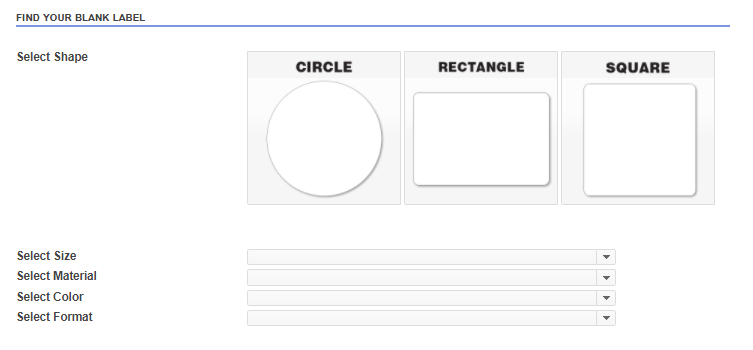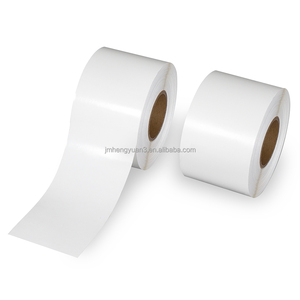Use Blank Labels on bottles, jars, packages, and more.
Use Blank Labels on bottles, jars, packages, and more.
Blog Article
Comprehending Just How Blank Labels Work to Enhance Your Labeling Experience
Comprehending the mechanics of blank labels is crucial for enhancing your labeling practices across various contexts. These flexible devices provide substantial benefits, such as modification and adaptability, making them a suitable choice for both expert setups and personal usage. From inventory administration to home company, the implications of their calculated application can lead to improved performance. However, to completely realize how these labels can change your procedures, one must think about the various types offered and the myriad means they can be customized to fit certain demands.

Advantages of Utilizing Blank Labels
Blank labels offer a flexible solution for numerous labeling demands, making them indispensable in both individual and expert setups. Their adaptability permits users to produce tailored labels tailored to details requirements, boosting organizational effectiveness. Whether utilized in home workplaces, retail settings, or industrial applications, blank labels assist in the identification and categorization of items, documents, and personal products.
One considerable advantage of blank labels is their cost-effectiveness. By permitting users to print only the labels they need, waste is lessened, and supply monitoring becomes much more workable. Furthermore, blank labels work with numerous printing approaches, consisting of inkjet and printer, making them available for different users.

Additionally, the usage of blank labels streamlines the process of updating details, as customers can conveniently print new labels to replace out-of-date ones, guaranteeing that all items and files are properly identified. Overall, blank labels offer a sensible and efficient labeling option for varied applications.
Kinds Of Blank Labels Available
What choices are offered when it comes to blank labels? Blank labels come in a selection of kinds, each suited for various applications and choices.
An additional popular option is synthetic labels, typically made from products like polyester or plastic. These labels are understood for their longevity and resistance to water, chemicals, and tearing, making them appropriate for extreme settings. They are generally made use of in commercial setups or for labeling items that might be subjected to wetness.
Furthermore, there are thermal transfer labels, which need a printer that utilizes heat to transfer ink onto the label surface area. These labels are preferred for their high-grade print and long life.
Last but not least, specialized labels accommodate particular demands, such as removable labels for momentary usage or high-temperature labels for extreme conditions. Understanding these alternatives permits individuals to choose the most appropriate blank tag for their special labeling demands.
Customization Options for Labels
A wide selection of modification choices is available for labels, permitting customers to tailor them to specific demands and branding demands. Users can pick from different sizes, forms, and materials redirected here to ensure that the labels properly fit their designated purpose. Usual materials consist of paper, polyester, and vinyl, each offering various levels of resilience and visual charm.
Color alternatives play an important function in customization, making it possible for brands to maintain uniformity with their corporate identification. Individuals can pick from a spectrum of colors or also choose personalized visit printing to match certain branding elements. Furthermore, labels can be published with special styles, logo designs, and message, enhancing brand name recognition and aesthetic effect.
Another vital facet is the option of adhesive. Tags can be developed with irreversible, removable, or repositionable adhesives, relying on the application demands. This adaptability permits reliable labeling services across different atmospheres, from retail to commercial settings.

Tips for Effective Labeling
Effective labeling goes past customization; it additionally includes strategic factors to consider that improve functionality and interaction. To achieve reliable labeling, begin by plainly defining the objective of each label.
Following, prioritize exposure by selecting ideal colors and typefaces. High contrast in between message and background boosts readability, while larger typefaces facilitate fast recognition. Furthermore, ensure that labels are positioned in a regular and logical fashion, making it simpler for individuals to situate and translate details.
Consider the longevity of labels as well. Select products matched for the particular setting where the labels will certainly be used, whether it be inside your home or outdoors. Water-proof or tear-resistant options may be needed relying on the context.
Lastly, consistently review and update your labels to reflect any kind of adjustments in information or usage. This positive technique not just keeps clarity but also prevents complication with time. By adhering to these tips, you can optimize the performance of your labeling initiatives, guaranteeing they offer their intended purpose hop over to here efficiently.
Applications of Blank Labels
Blank labels provide various applications across various industries, making them an indispensable tool for organization and communication. These versatile labels are typically used in warehouses for inventory management, allowing businesses to conveniently recognize and track items. By applying blank labels to storage bins, racks, or pallets, firms can enhance their procedures and decrease the possibility of errors.
In the medical care field, blank labels play an essential duty in identifying medications and medical materials, making sure proper identification and use. Adjustable labels can include essential details such as dosage, expiration days, and client details, boosting security and compliance.
In retail, blank labels aid in prices items, supplying promotions, or classifying shelf locations, which inevitably improves the consumer experience. They enable quick updates to rates or product details without the requirement for pre-printed labels.
Furthermore, blank labels are valuable for individual use, such as arranging office, crafting, or labeling food containers. Their versatility permits individuals to develop customized options that satisfy certain requirements. Overall, the applications of blank labels are extensive, underscoring their value in fostering performance and clearness in various settings.
Verdict
Finally, blank labels offer a versatile and effective remedy for different classifying needs. Their versatility in dimension, form, and material permits customized applications across different settings. By leveraging customization choices and reliable labeling strategies, organizations can improve quality and communication (Blank Labels). Eventually, the combination of blank labels right into operational processes adds to enhanced performance, making them an important resource for both individual and specialist use.
Report this page